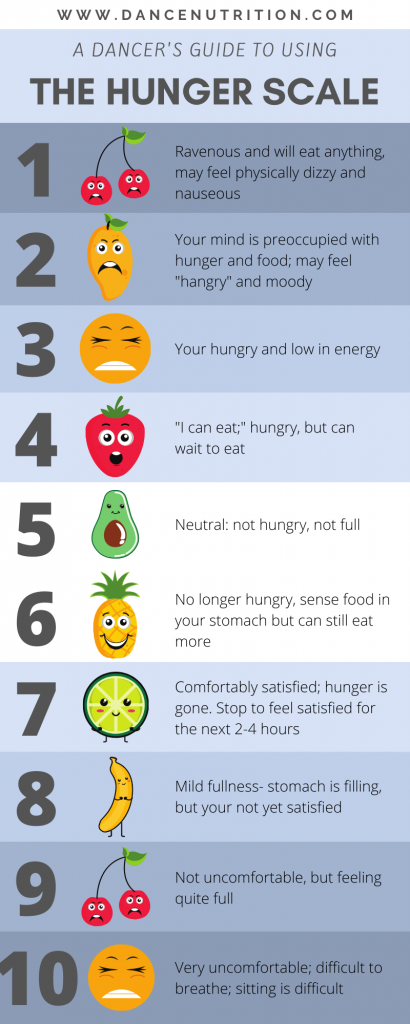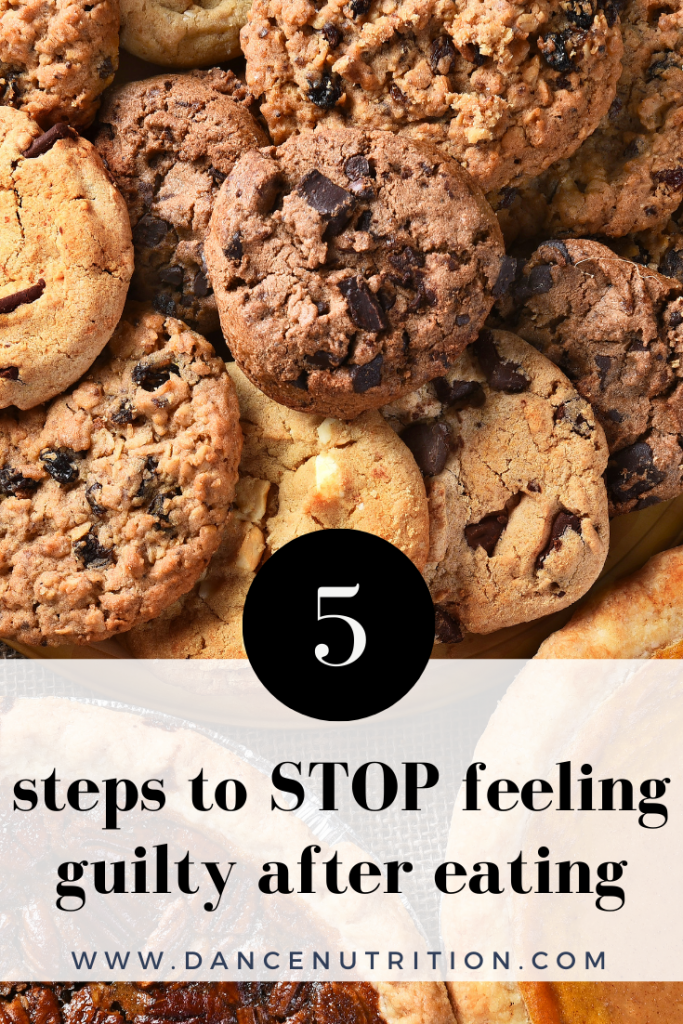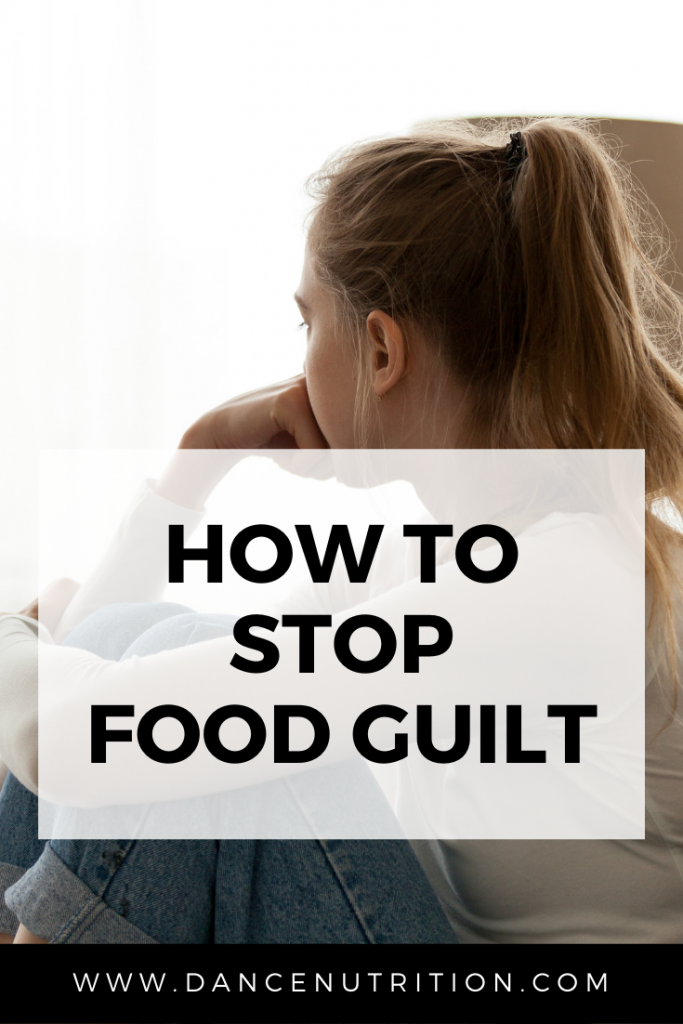There was a time when I avoided dessert because I believed, “the guilt just wasn’t worth the bite.” My food guilt was so severe that thoughts about eating say, a standard bag of M&Ms, consumed me for DAYS. And while this mental parade of guilt was exhausting, it always made its way into my brain, especially after another bout of “failed willpower” from an otherwise “clean” diet. But in my pursuit away from restrictive eating behaviors I overcame this food guilt, and today, I’m going to teach you how to do the same.
What Is Food Guilt?
We’re not born feeling guilt— especially food guilt. In fact, food guilt often stems from external messages that categorize food, deemed to be either “healthy” (AKA “good”) or “unhealthy” (AKA “bad”). Most often, these guilt-ridden foods are higher in fat and sugar, both of which diet culture commonly victimizes. When the goal of “eating healthfully” is taken to the extreme, such as with diets like “clean” eating, any preconceived “unhealthy” food subsequently incurs feelings of guilt.
But feeling guilty about food impacts both our mental and emotional well-being. When we associate ourselves with being “bad” for eating a particular food, we ignite a psychological cascade of desire. In other words, the more we attempt to control ourselves around food, the more out-of-control we become. Eventually, our supposed willpower fails and feelings of guilt consume us.
But here’s a spoiler: it’s not your willpower that fails. In fact, a previous study demonstrates that those who associate indulgent foods with guilt are more likely to feel less “in control” over such foods when under stress. So willpower is nothing more than diet culture’s excuse for the reason why diets don’t work— designed to shift the blame from the diet to the dieter. And while food guilt might not pose major restraints on everyone, studies show that even the mere thought of indulgent food can spark guilt in those with restrictive eating habits. This is because, to those struggling with disordered eating, “forbidden foods” hold a heightened sense of excitement.
Dancers Need to Stop Feeling Guilty About What They Eat
The fascinating thing about food guilt is its prevalence among dancers and non-dancers alike. I discuss how dancers can work through food guilt in an article for Pointe Magazine. Most importantly, dancers must be aware that “food guilt can cause stress, fear, and anxiety at mealtimes, and increase a dancer’s vulnerability to disordered eating behaviors.”
Of my nearly 40,000 followers on Instagram, about 85% reported struggling with some degree of disordered eating and 93% reported experiencing food guilt. Though these polls are informal and do not reflect evidential data, the results coincide with previous studies reporting the highest rates of disordered eating among high school athletes in aesthetic sports— those who were twice as likely to suffer from a sports-related injury. To read more about the prevalence of disordered eating, check out these stats from NEDA,
Stop Feeling Guilty After Eating
Whether it’s a bowl of veggies or an ice cream sundae, all foods fit into a balanced lifestyle. Eating, as a life experience, comes alongside appreciation, fulfillment, and satisfaction. Removing these experiences takes away from our culture and tradition. For dancers, in particular, food is not only meant to nourish our physical performance.
Does your food guilt prevent you from enjoying food? And does the thought of eating, say, a brownie “guilt-free” sound foreign? I know that dropping this guilt is easier said than done. So here are 5 steps that you need to start taking TODAY. Once you start, share a comment about your experience with any step!
5 Steps for Dancers to Work Through Food Guilt
Step 1: Identify and Validate Your Feelings of Guilt
Disordered eating and food guilt are both normalized in our culture. It’s nearly impossible to not have a heightened awareness of foods that we often think of as being less nourishing (or, less “clean”). To rid our minds of these negative associations, like guilt and shame, around food, we must unlearn the messages of diet culture.
Unlearning the toxic messaging around food and body is how we begin to rebuild our relationship with both.
This takes a proactive approach and some serious self-reflection. First, consider patterns. When are you feeling food guilt? Do you feel guilty because you ate something that is less nourishing? Remember that food nourishes not only your performance and health but also your mind and soul.
Is your guilt manifesting after a mindless eating experience? If so, was food what you needed at that moment? Emotional eating is valid and might require some additional steps to work through. If your mindless eating is the result of stress, boredom, or anxiety, then consider if a different activity can better help you manage those feelings.
Step 2: Break The Rules
Eating foods that don’t feel safe can be scary, especially if we feel an overall lack of trust in ourselves around that food. For example, I used to feel that I could never trust myself with chocolate in the house. However, my avoidance of chocolate prevented me from making peace with chocolate. Remember this: avoidance of [insert “weakness” here] heightens our awareness of [insert “weakness” here]. You’ll need to break your food rules in order to rebuild trust in yourself around your favorite foods. I wrote this article to teach you how to break food rules using a systematic approach. Check it out and report back.
Rationalizing your food choices, or placing conditions upon them is another tactic often used to fuel the cycle of food guilt. Have you ever thought, “I can eat XYZ because I “ate clean all week” or “exercised for X amount of time?” Removing such conditions is how we give ourselves unconditional permission to enjoy our favorite foods.
Step 3: Practice Mindful Eating
Mindful eating involves learning how to listen and honor our body’s cues of fullness and satisfaction. Here’s an article that teaches you more about the process. Building a positive eating experience is key, especially when it comes to foods you might not feel are as “safe” or “clean.”
Write out a list of common foods you feel are “bad” or “unhealthy.” Reflect upon why you feel this way and when you learned this information. Reframe your mindset and think “this food will nourish my mindset.” Challenge yourself and utilize my fullness chart (below).

Step 4: Rely On Affirmations
When it comes to food and nutrition, changing your mind’s hardwiring is a journey that involves a proactive approach to battling toxic messages set forth by diet culture. Your mindset is like a muscle; similar to how you work your muscles in class, your mindset requires consistent work. Utilize positive affirmations as repetitive reminders (here is a list of my favorites!). Write them on Post-its and hang them in your kitchen and/or bedroom!
Step 5: Be Curious, Not Judgmental
Compassionate curiosity allows you to make space for self-reflection and personal understanding. As mentioned above, your feelings of guilt and shame are rooted in social stigmas and societal standards about what a “healthy” diet “should” look like. Unlearning these messages takes time. There may be instances when you feel you did overdo it. Instead of saying, “I’m so bad! I ate way too much dessert… I should throw away the rest!” Try “I overdid it on dessert today… I’m not feeling too great physically from it. It’s okay, this is not my fault. I’m learning how to honor my needs mindfully and that takes time.”
Experiencing guilt, shame, and dismay after eating limits the mental and emotional space available for one’s artistry and dancing ability. Of the dancers I polled on Instagram, about 70% of those reporting disordered eating also reported feeling limited in their dancing ability. Perhaps we can (informally) assume that disordered eating negatively impacts dancing ability. If you’re looking for more help, grab this free guide to begin the journey toward food freedom and intuitive eating.




